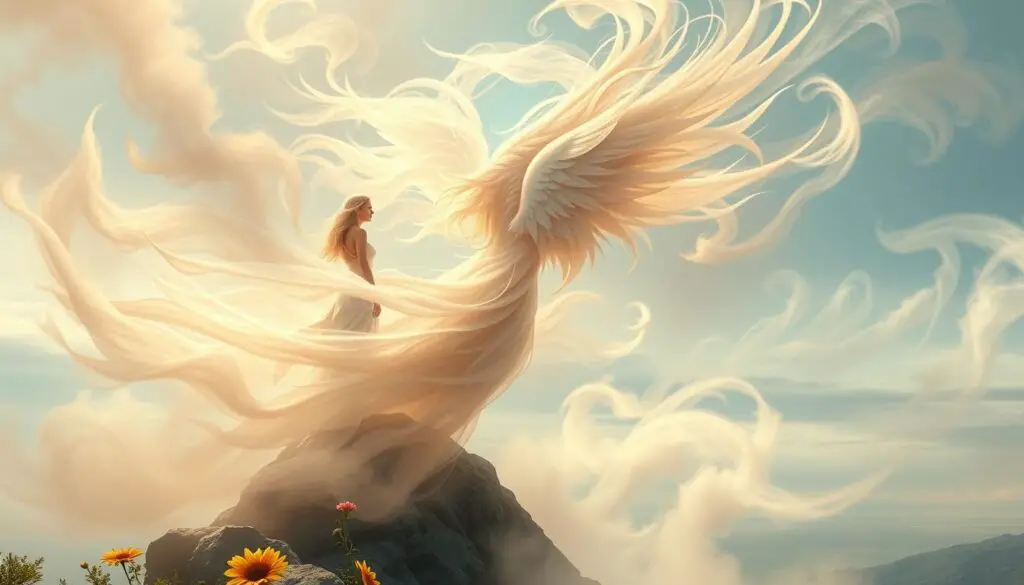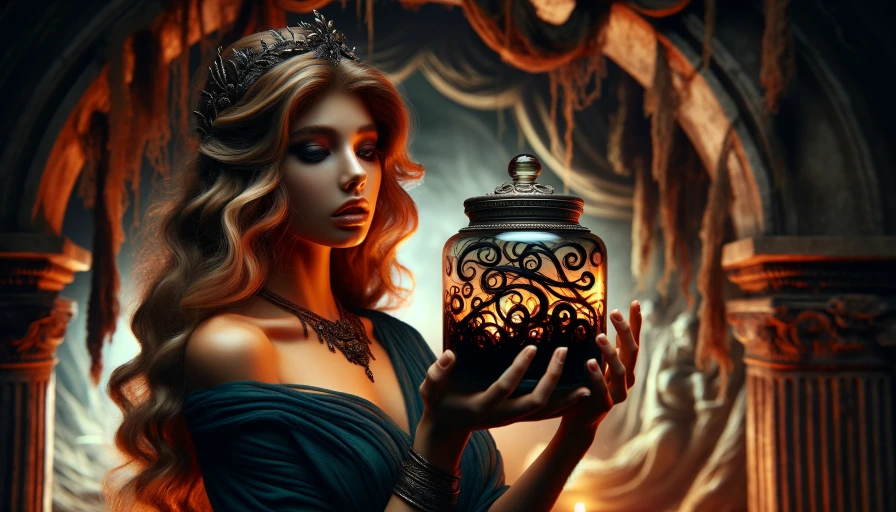Aura was a minor wind goddess in Greek mythology. She is a fascinating, yet not well-known figure.
Her story is filled with legend and tragedy. It shows her journey from a pure huntress to her downfall.
Aura’s tale is linked with gods like Artemis and Dionysus.
Her story is complex, touching on themes of pride, revenge, change, and legacy.
This look into Aura’s life gives us a deeper understanding of Greek mythology.
Key Takeaways
- Aura is a minor wind goddess mentioned in Greek and Roman mythology.
- She is described as the daughter of the Titan Lelantos and the mother of Iacchus by Dionysus.
- Aura’s story is a tragic one, involving her association with gods like Artemis and Dionysus.
- After being violated by Dionysus, Aura went mad and transformed into a ruthless slayer of men.
- Her legacy is reflected in classical literature and art, portraying her relationship with other mythological figures.
Introduction to Aura in Greek Mythology
The Aura backstory is a fascinating part of Greek mythology.
It tells of a divine being who felt like a gentle breeze at dawn. Aura symbolizes purity and peace.
Her story is a mix of divine power and human weakness.
Aura was a minor god, but her story is important. It shows how gods and humans interacted.
Her tale is about the balance between being powerful and staying humble.
Understanding Aura helps us see how ancient Greeks viewed gods and humans.
Her story is a key part of Greek mythology.
Zeus ruled the sky, Poseidon controlled the sea and caused earthquakes, and Hades ruled the underworld. Aphrodite came from a fight against Cronus. These stories show how complex Greek gods were.
Ares and his complex relationships show how Aura’s story is also deep and complex.
Aura is known for bringing peace with her gentle breeze. Her story shows the beauty of Greek mythology. It also shows how gods could be harsh to each other.
Who Was Aura in Greek Mythology
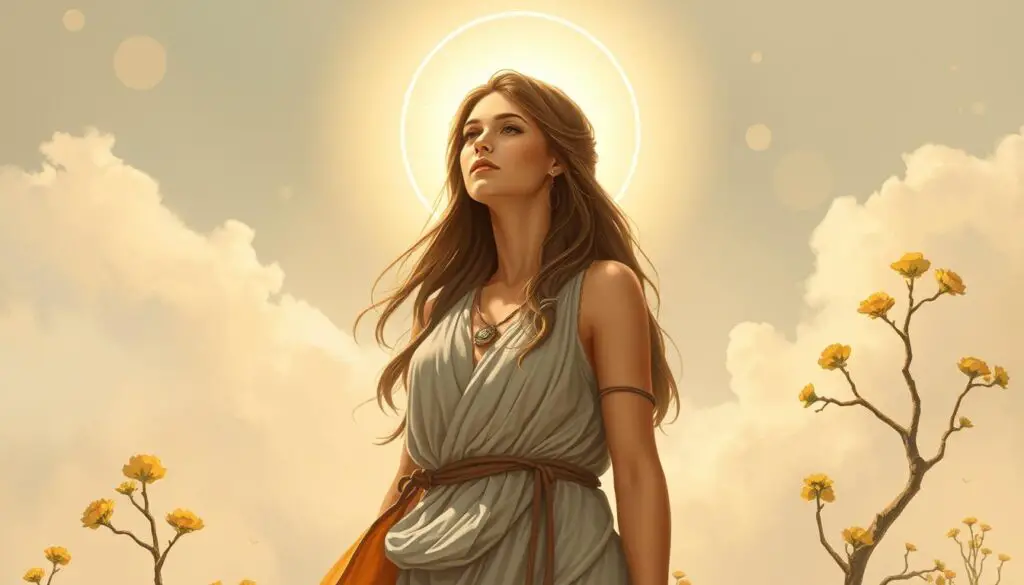
Aura, the Greek goddess of the breeze or morning air, is a fascinating figure.
Her name means “breeze,” showing her connection to the wind.
Her story is full of interesting details that help us understand her mysterious nature.
Meaning and Etymology of Aura’s Name
Aura’s name comes from the Greek word “ἀήρ” (aēr), meaning air or breeze.
This fits perfectly with her role as a goddess of gentle winds and the refreshing morning air.
Her name shows her essence, making her stand out among Greek gods and goddesses.
Parentage and Family Ties
Legend says Aura is the daughter of Lelantos and Periboia, or Cybele in some stories.
Lelantos, a young Titan, and Periboia, an Oceanid, are her parents. This makes Aura a second-generation Titan, related to many famous deities.
She didn’t have siblings, so she made strong friends and allies in Phrygia.
She was especially close to her cousin Artemis, another famous huntress.
Their friendship turned tragic because of jealousy and betrayal. Aura’s story also tells of her tragic change into a spring after she drowned in the river Sangarios.
This shows her complex character and the themes of pride and failure in her story.
Aura’s Role and Symbolism
Aura was a symbol of nature’s purity and strength, acting as a virgin huntress.
She was similar yet different from Artemis, another famous huntress. Their friendship ended in tragedy due to jealousy and betrayal.
She was also linked to the wind, showing her deep connection to air.
After becoming a spring, she became the mother of twins, including Iacchus, a minor deity.
Works by Nonnus and Ovid highlight her importance and tragic fate, showing her significant role in ancient mythology.
Aura’s Association with Artemis
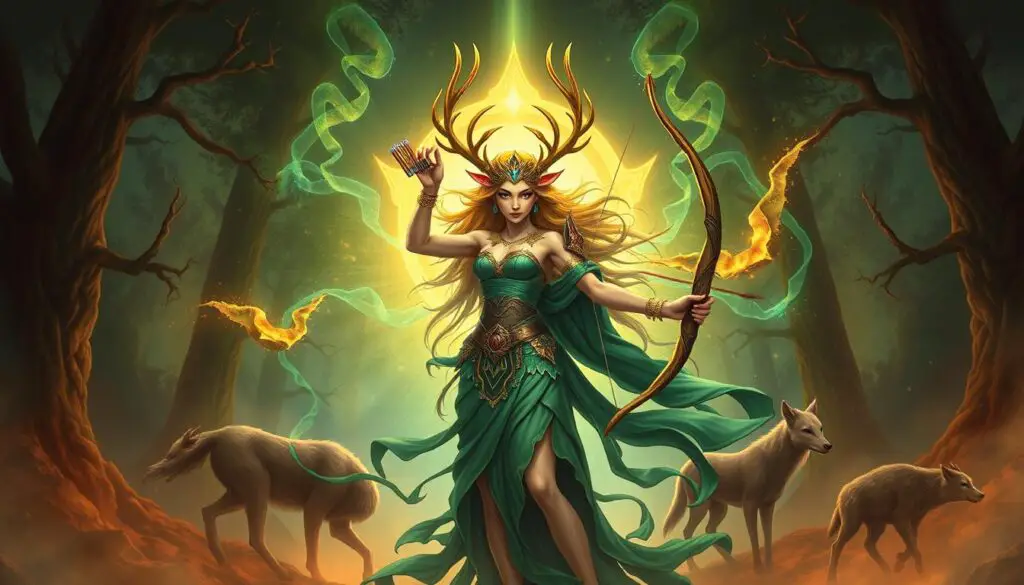
Aura and Artemis are linked by their roles as virgin huntresses. In “aura myths and legends”, their stories often come together.
Artemis is known as the wild goddess, a lady of beasts, and a skilled archer.
‘Aura Greek myth’ tells a story that both matches and contrasts with hers.
The Virgin Huntress
Aura’s story matches Artemis’ chaste image, known in “aura myths and legends”. Artemis is all about hunting, animals, kids, and birth.
She’s Apollo’s sister and was key in many stories, like Heracles‘ tasks and the Trojan War.
Aura reflects Artemis’ purity and independence, being a virgin huntress too.
Comparison with Artemis
Looking at Aura and Artemis shows interesting sides of “Aura Greek myth”.
Artemis is powerful, even Aphrodite can’t touch her. But Aura’s pride in her beauty and speed leads to her downfall.
This is a big difference from Artemis’ lasting fame.
Artemis was highly respected with temples and shrines in Ancient Greece. She stood for strength and purity.
But Aura’s story takes a dark turn after she compares to Artemis. This shows the dangers of challenging the gods, as seen in “Aura Greek myth”.
The Myth of Aura and Dionysus
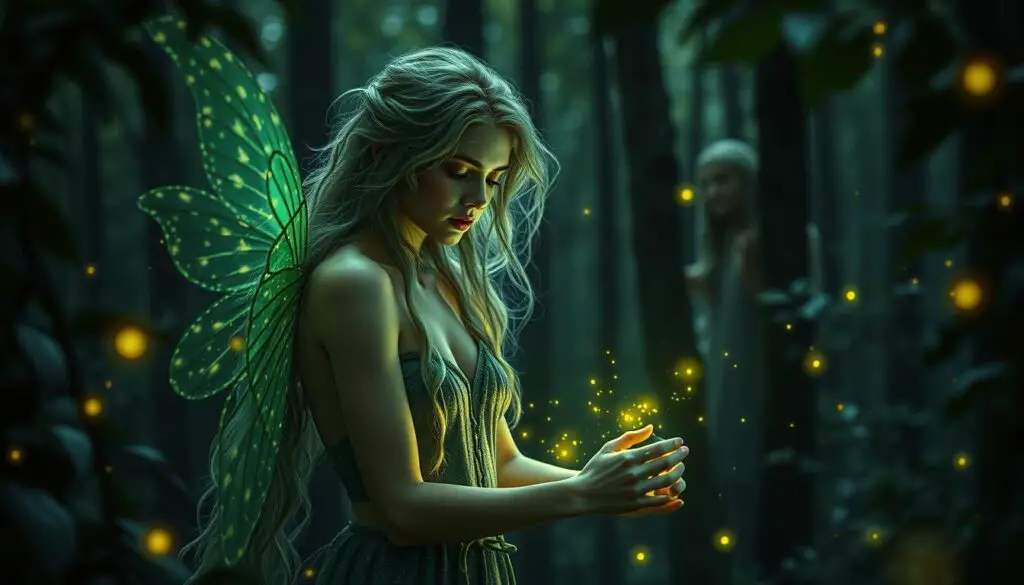
The story of Aura and Dionysus is filled with offense, retribution, and violation.
Aura was a minor wind goddess and a virgin friend of Artemis.
This tale shows the complex and often harsh side of Greek mythology.
How Aura Offended Artemis
Aura looked at Artemis in a way she shouldn’t have. This act of disrespect deeply upset Artemis. It started a chain of events that would change Aura’s life forever.
Aura was a virgin huntress and a guardian of purity. Her actions were seen as a huge betrayal.
Role of Nemesis in Aura’s Punishment
Nemesis, the goddess of retribution, played a big part in Aura’s punishment.
She made sure Aura faced a severe and fitting penalty. Nemesis made sure the punishment was as bad as the crime.
Eros, the god of love, also played a role in Aura’s fate.
He made things even harder for her. This led to Dionysus getting involved.
Details of the Rape by Dionysus
Dionysus, the god of wine, was forced by Eros and Nemesis to punish Aura harshly.
He got her drunk and then took advantage of her. This led to Aura having twin sons.
This act of rape shows the brutal side of Greek mythology.
It highlights the raw and uncontrolled nature of the gods.
Aura’s Tragic Downfall and Transformation
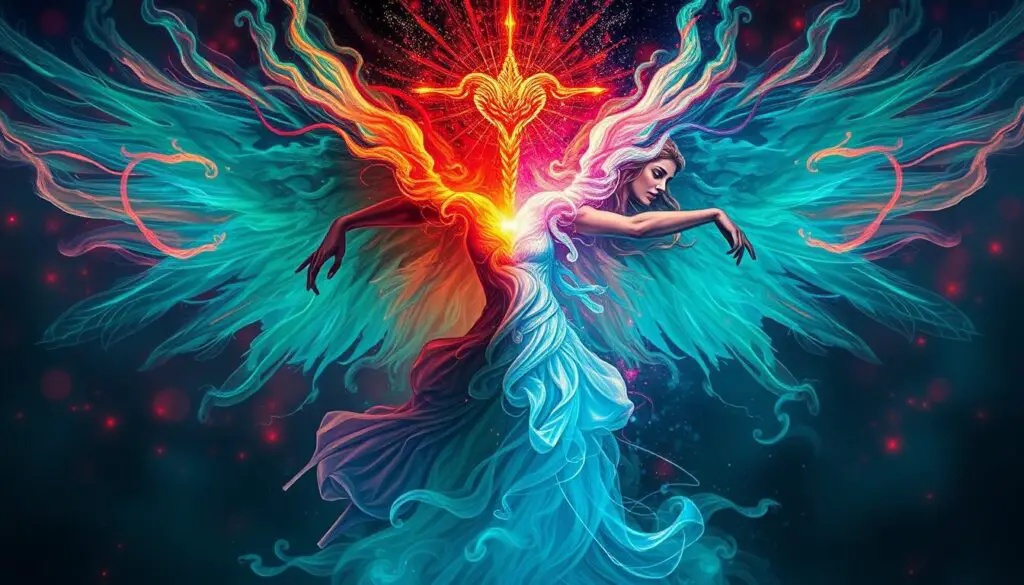
Aura’s story in Greek mythology shows how divine power can change a person’s life.
She was a symbol of virgin strength but faced a sad end.
This shows how gods can be unpredictable and their favors can change.
Stories about Aura talk a lot about pride and godly revenge.
After being tricked by Dionysus and going mad, Aura started causing harm.
Nemesis, the goddess of revenge, then made things worse for her.
Nemesis made sure those who got too full of themselves were punished.
She kept a balance, making sure no one got too lucky or too much good fortune.
Aura’s story ends with her changing into a breeze or water aura.
This change shows the dangers of being too proud around gods.
It also shows how gods can change their minds easily.
Aura’s tale teaches us about the powerlessness of humans against gods and the power of fate.
The Offspring of Aura
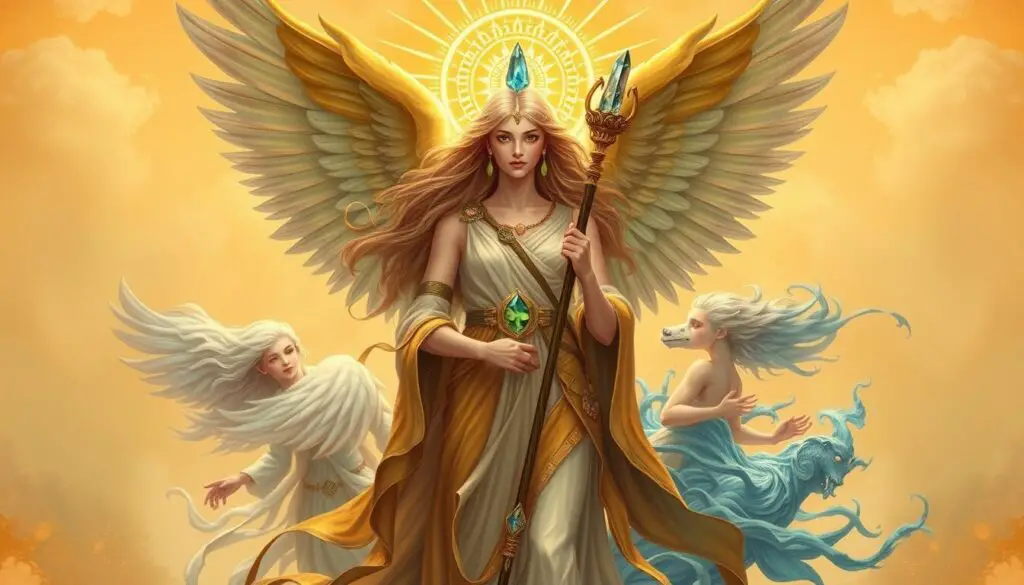
Aura’s story is a sad but key part of her tragic tale.
She had twin sons with Dionysus, who became symbols of her lasting impact on Greek myths.
The Birth and Fate of Aura’s Twins
Aura was forced into a violent encounter with Dionysus, leading to the birth of twins.
This event is crucial in understanding Aura’s place in Greek mythology. The twins had different fates.
One son was killed by Aura in a moment of madness.
This act shows the deep emotions Aura felt. It adds to the tragic side of her story.
Iacchus and His Significance
The other twin, Iacchus, became a key figure despite his dark start.
He is known in the Aura Greek myth and is linked to the Eleusinian Mysteries. Lacchus played a big role in initiation rites and celebrations.
He shows a side of redemption and continuity in Aura’s story.
Lacchus connects to Dionysus’s divine line and adds to the cultural stories of Aura in Greek mythology.
Aura in Art and Iconography
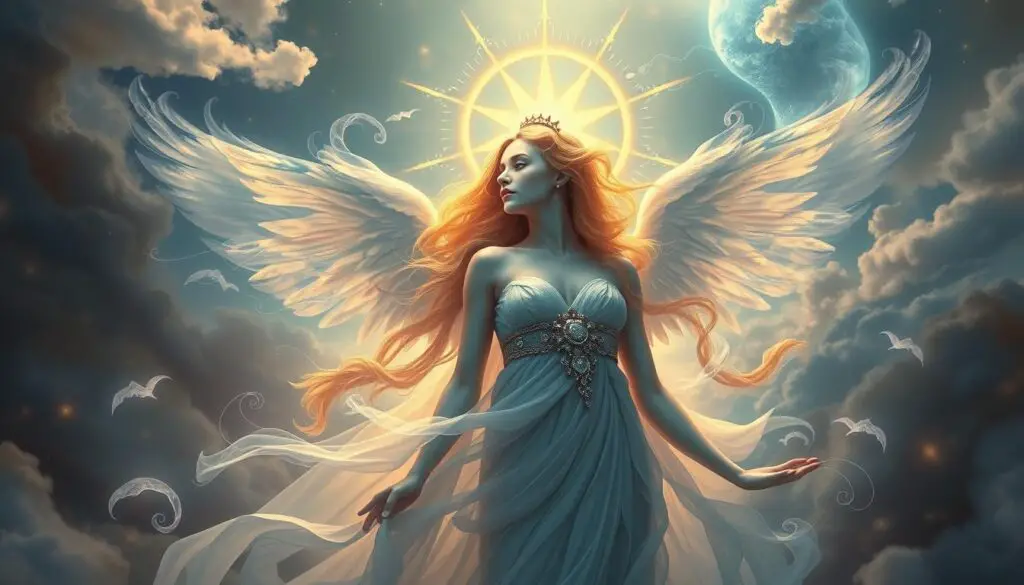
The aura of mythological character is rarely seen in art, showing she’s a lesser-known goddess.
What art we do have shows her linked to wind and speed.
These pieces capture Aura’s role in Greek mythology, showing her complex nature.
Halos are common in religious art, and found in many cultures.
They look like circles or flames around heads or bodies.
Colors like gold and white are often used to show a figure’s divine status.
Halos in Ancient Greek art started around 450–30 BC. They were used for figures like Perseus and Medusa.
In India, halos appeared in Buddhist art by the 1st century AD. This shows how halos were used across cultures, but Aura is less well-known.
Walter Benjamin explored aura from many angles, including theosophy and occultism.
His ideas help us see Aura in art as unique and mystical. This view helps us understand how Aura was seen in ancient art.
Aura’s Legacy and Cultural Impact
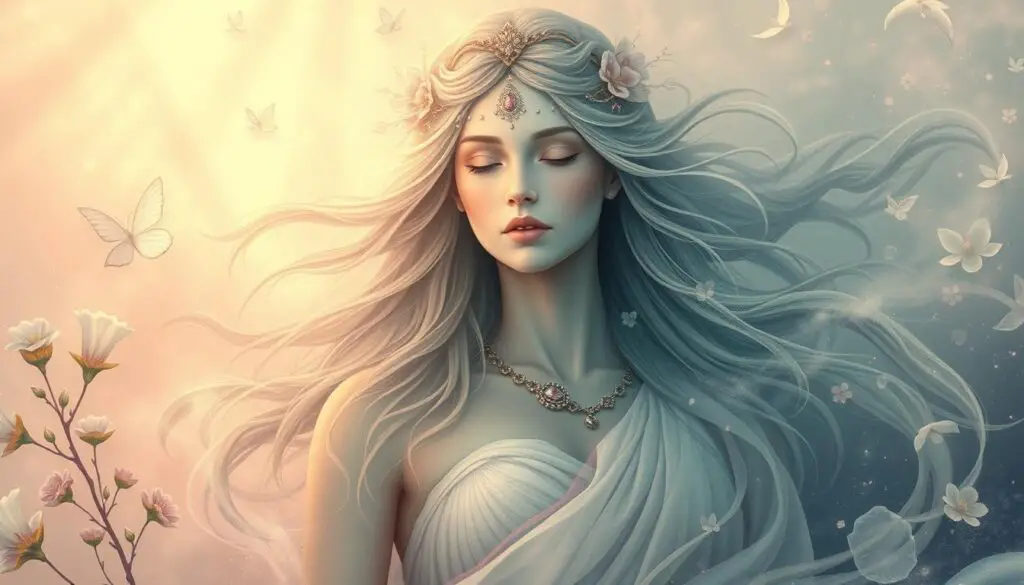
Aura’s story in Greek mythology might not be as well-known as Zeus’ or Hera’s. Yet, its impact is still felt today.
The ancient texts tell us about Aura’s legacy, which has left a mark on our culture.
Depictions in Ancient Texts
Aura’s story in old literature gives us a peek into Greek mythology’s mysterious world.
Writers like Nonnus in “Dionysiaca” have given us a detailed look at Aura’s life.
They show her deep connections with gods like Dionysus and Artemis.
These stories help us understand Aura’s complex character.
They let us see the many sides of her story.
Aura’s story is about change, tragedy, and the gods’ wrath. These themes are still seen in how her myth is told today.
This makes Aura’s story a lasting part of Greek mythology.
References in Modern Culture
Today, Aura’s myth doesn’t get mentioned much, but it still affects art and entertainment.
Her story of beauty, pride, and fall reminds us of the depth of modern stories. We see this in books, movies, and TV shows.
- Authors like K.L. Armstrong and Sayantani Dasgupta use Greek mythology in their work.
- They add elements that remind us of Aura’s story.
- The success of “Percy Jackson and the Olympians” shows how much people still love these old stories.
Aura’s story is still popular today, even if it’s not always directly mentioned.
Her tale of change and gods’ power still draws in audiences. It shows the lasting appeal of Greek mythology.
Conclusion
The myth of Aura in Greek mythology tells us about purity, pride, punishment, and change.
It shows how complex ancient Greek stories were. Aura’s story warns us about the dangers of being too proud.
Looking into Aura’s life and her connections with other gods shows how deep Greek myths are.
We see how she was linked to gods like Artemis and Dionysus. This helps us understand the intricate world of Greek mythology better.
Aura’s story also shows her lasting impact on culture. It teaches us about ancient beliefs and values.
The story of Aura, a lesser-known figure, connects us to major gods like Zeus, Artemis, and Dionysus. It sheds light on how humans and gods interacted in ancient myths.
Frequently Asked Questions
Q: Who is the Greek god Aura?
Aura is not a Greek god but a Titaness, known for her virginity and fierce nature as a huntress. She represents the breeze and the fresh, cool air of early morning, often associated with harsh, untamed aspects of nature.
Q: Is Aura a nymph?
No, Aura is not a nymph. She is a Titaness, which places her among the ancient divine beings who preceded the Olympian gods in Greek mythology.
Q: What is the symbol of Aura?
The symbol of Aura is often represented by invigorating morning air or sometimes depicted with a spear, reflecting her role as a huntress and her vigorous nature.
Q: What is the Greek name for Aura?
The Greek name for Aura is Αὔρα, which directly translates to “breeze” or “air.”
Q: Is Aura a male or female?
Aura is a female figure in Greek mythology. She embodies the qualities of a maiden huntress, similar to Artemis, but with distinct characteristics and mythology.
Q: What race is Aura?
In terms of Greek mythology, Aura is a Titaness, belonging to the race of Titans, who are the pre-Olympian gods and personifications of natural forces and elements.


